|
In the 1990's, I made a very portable model railroad. I named it the . . . . BLURR Bruce's Loop Union Rail Road. . (Gary said it was the Bruce's Loop UN-sceniced Rail Road, and he's still right after 20 years) .
Blurring FAST to set up and take down, because it's one piece. Here's a picture from long ago just after I built it. |
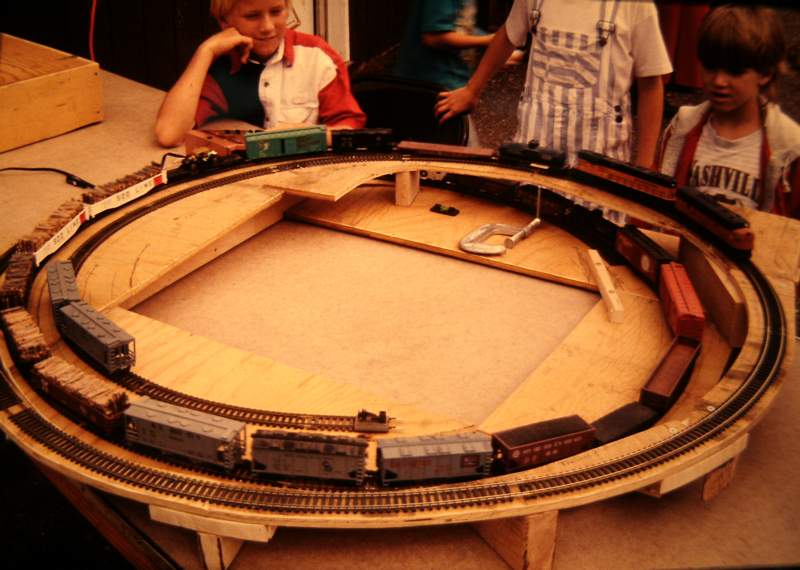
. . . . . . Someone should do a styrofoam scenery modeling clinic with it. I don't have time to improve it.
.
|
I hauled it out of the garage and set it up for pictures today (May 2011). (Gee whiz, it still doesn't look like much after 20 years.) I just set it on a picnic table. It doesn't have it's own legs.
The round circle in the middle is a picture board with railroad-y old calendar pictures. |
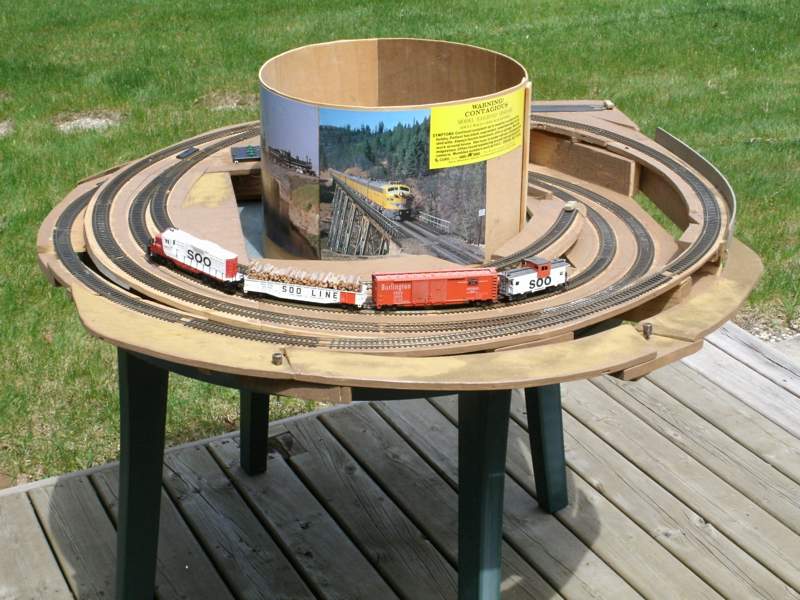
|
I did it in HO-scale because all my equipment is HO. I could have saved lots of space and size if I did it in N-scale.
I considered just building a circle of track, but that doesn't allow much space for a train. The engine could be within inches of the caboose.
The only thing that makes it bearable to watch long cars go around an 18-inch radius track is that the train never leaves a curve.
With the over-and-under, I can run over 25 cars in HO-scale and yet it looks like the engine is a long way from the caboose.
What's that you say about cabooses?
This view of the over-under needs a bridge plate and trestle supports for realism. Or a viaduct, but the track angle doesn't suit concrete arches. |

|
The only scenery in 20 years is some paint (and not enough of that) and this piece of plaster block wall from a friend. And I made a red ribbed steel retaining wall (which has just one section so far). It is simulated by the corrugated interior of light-bulb cardboard boxes. It was easy and cheap (ask my friends about that). The wall was a proper model engineering method to scenic the close vertical edge between tracks. |
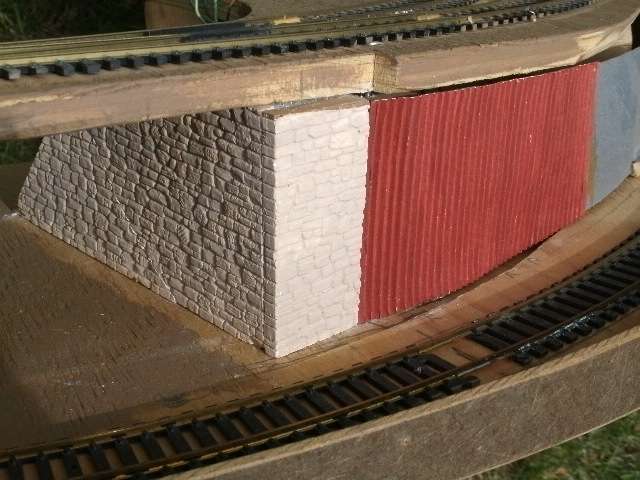
|
Besides the over-and-under, there is a passing siding and a spur. Comparing the view below with the first picture at the top of this page, I must have squeezed in the passing siding after I first built it. It's mostly 18-inch minimum radius, and 15-inch on the spur to get inside the circle. I wired it for 4 blocks with an Atlas Selector switch (this was long before DCC was around). The whole layout is 43 x 46 inches. |
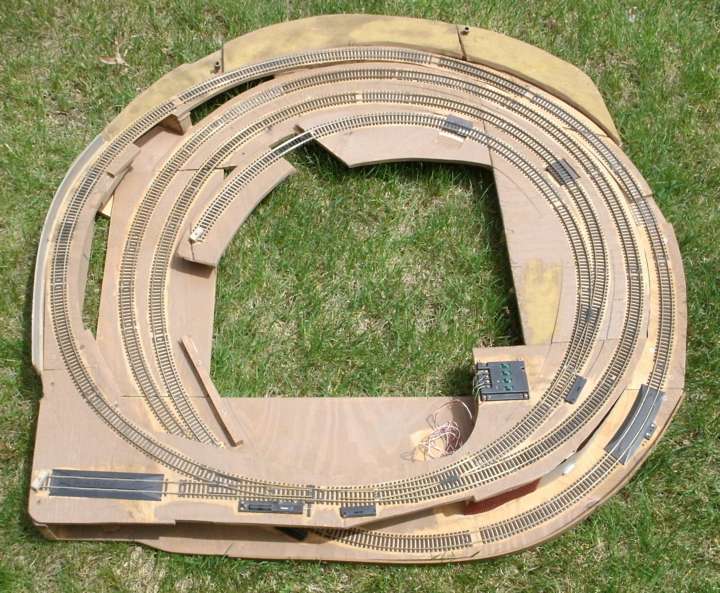
.
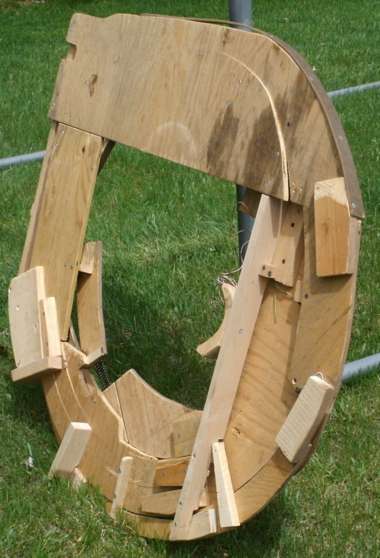 .
.
.
The bottom of the layout is just wood blocks
and cookie-cutter scraps of 7/16-inch plywood.
I didn't weigh it, but it feels like it's under 20 lbs.
It is still fairly rigid, compared to a flat piece of wood.
|
To help me haul it by myself up steps and down long hallways of schools, I added this wooden shoulder rest. |
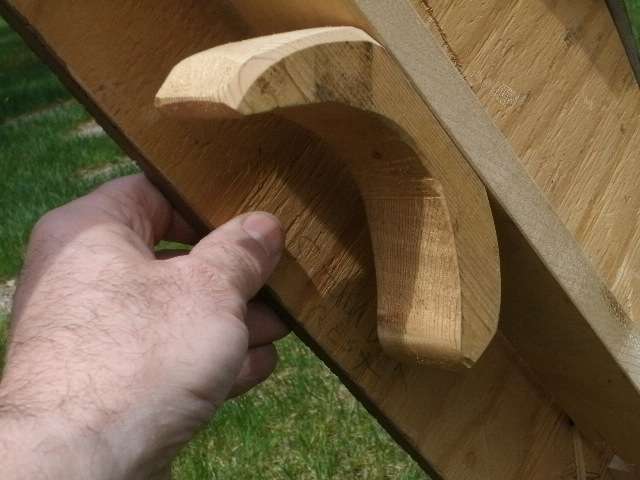
|
Here's the Union part of the railroad. One spur heads off the corner of the layout. It can connect to other modules that can have switching or whatever. |
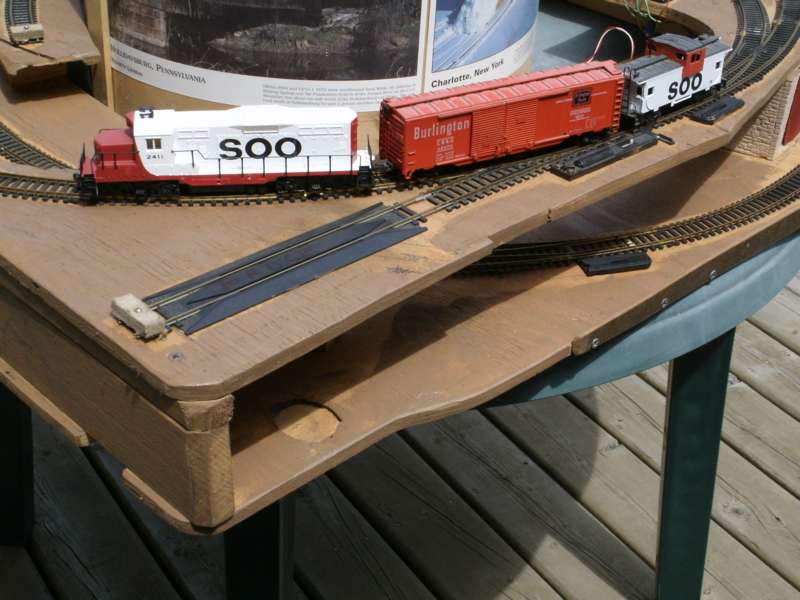
|
This year, I also have an un-used module. (the rest are built almost permanently into my basement model railroad) I could put this small yard module on the spur. It's 1 x 4 foot and framed in 1 x 4 lumber. |
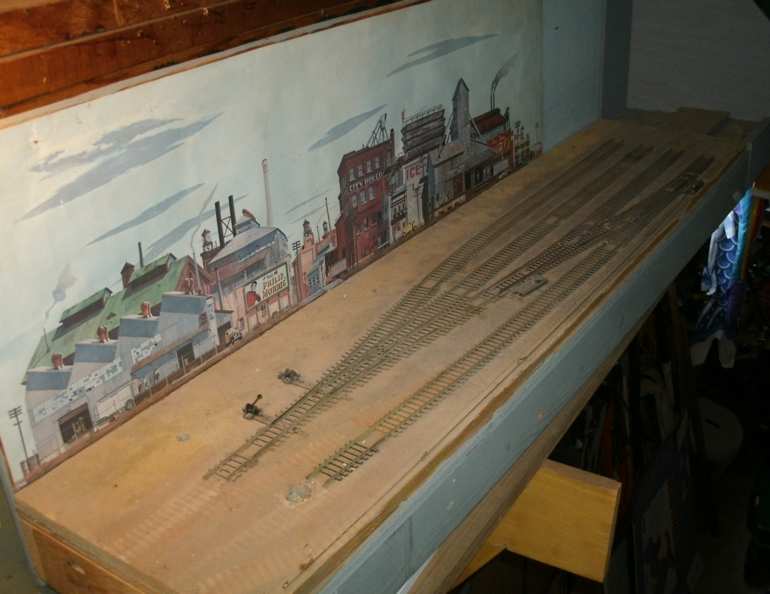
.
.
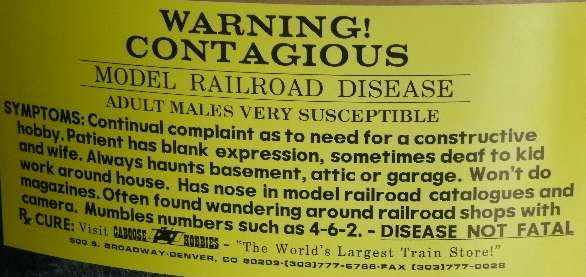
.
Link back to my index page, Bruce's RailRoad Pictures
( the index page is now on the TrainWeb site, as of January 2011. And I will have to also keep the Next Generation index up-to-date also )
This page wrote in May 2011
.